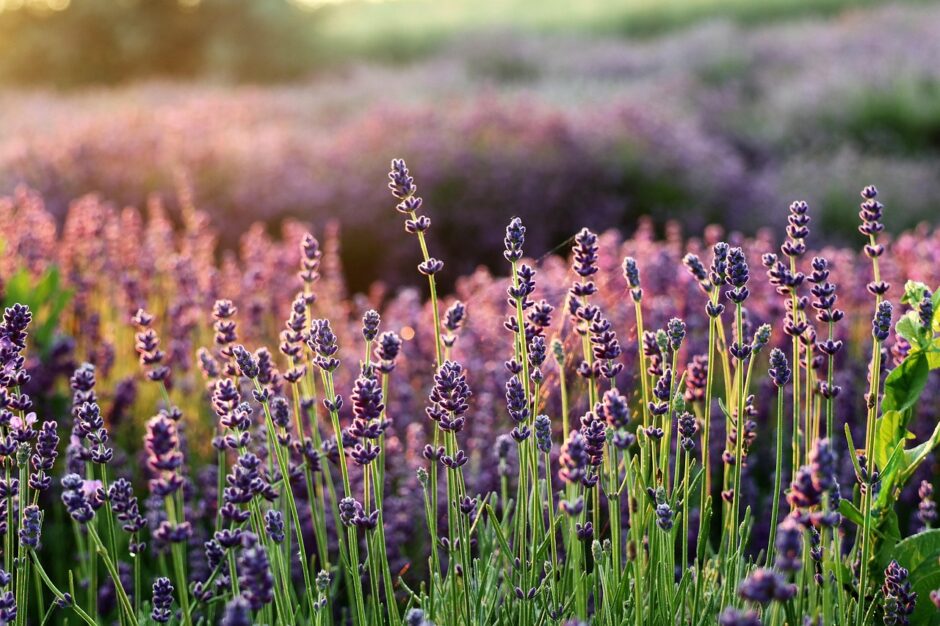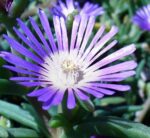Lavender, with its fragrant flowers and versatile uses, is a beloved plant in UK gardens. Whether you’re drawn to its soothing scent, its ability to attract pollinators, or its culinary and medicinal properties, growing lavender can be a rewarding experience. This comprehensive guide will walk you through everything you need to know about growing lavender in the UK, from selecting the right variety to caring for it through the seasons. We’ll cover planting, pruning, propagating, germinating seeds, and caring for lavender in winter, ensuring your plants thrive year-round.

Takeaway List
- Sun and Soil: Lavender thrives in full sun and well-drained soil.
- Hardy Varieties: Choose English lavender for the best results in UK conditions.
- Pruning: Regular pruning after flowering keeps plants healthy and shapely.
- Propagation: Easily propagate through cuttings.
- Winter Care: Protect tender varieties from frost.
- Multiple Uses: From cooking to relaxation, lavender has many applications.
What is Lavender?
Lavender (Lavandula) is a genus of flowering plants in the mint family, Lamiaceae, known for its aromatic leaves and vibrant purple flowers. Native to the Mediterranean, lavender has been cultivated for centuries for its essential oils, culinary uses, and ornamental beauty. In the UK, lavender is a popular garden plant due to its hardiness, low maintenance, and ability to thrive in various climates. The most common species grown in the UK are English lavender (Lavandula angustifolia) and hybrid lavenders (Lavandula x intermedia), though French and Spanish lavenders are also popular for their unique appearances and longer flowering periods.
Types of Lavender
When choosing lavender for your UK garden, it’s important to select varieties that are hardy and suitable for the local climate. Here are the main types:
| Type | Hardiness | Characteristics | Best Use |
|---|---|---|---|
| English Lavender (Lavandula angustifolia) | Hardy to -15°C | Compact, grey-green foliage, flowers in June-July | Borders, hedging, pots |
| French Lavender (Lavandula stoechas) | Less hardy | “Rabbit ears” bracts, flowers spring to autumn | Pots, sheltered gardens |
| Spanish Lavender (Lavandula stoechas subsp. pedunculata) | Less hardy | Similar to French, a unique flower structure | Pots, ornamental displays |
| Hybrid Lavenders (Lavandula x intermedia) | Hardy | Tall, high oil content, e.g., ‘Grosso’, ‘Provence’ | Essential oil production, borders |
| Portuguese Lavender (Lavandula latifolia) | Moderately hardy | Tall, pale lilac blooms, pungent aroma | Wildlife gardens, oil production |
For most UK gardens, English lavender is the best choice due to its hardiness and longevity. Varieties like ‘Hidcote’ and ‘Munstead’ are particularly popular for their compact growth and vibrant blooms.
Growing Lavender in the UK
Climate and Soil Requirements
Lavender prefers a Mediterranean-like climate with hot, dry summers and mild winters. In the UK, it thrives in full sun with at least 6-8 hours of direct sunlight daily. The soil should be well-drained, preferably sandy or loamy, with a pH between 6.7 and 7.3. If your soil is heavy clay, improve drainage by adding horticultural grit or growing lavender in raised beds. Lavender can tolerate poor soil but will not survive in waterlogged conditions, which can lead to root rot, especially in winter.
Best Times to Plant
The best times to plant lavender in the UK are spring (April-May) or early autumn (September). Avoid planting in winter when the ground is wet, as this can cause root rot. Spring planting allows lavender to establish before summer, while autumn planting gives it time to root before winter dormancy.
Container Growing
Lavender grows well in containers, making it ideal for small gardens, balconies, or for protecting tender varieties in winter. Use a pot with good drainage and fill it with a soil-based compost mixed with grit to ensure excellent drainage. Container-grown lavender may need more frequent watering, but should still be allowed to dry out between waterings.
Planting Lavender
Soil Preparation
Prepare the planting hole by loosening the soil and adding compost or well-rotted manure if the soil is poor. However, lavender does not require rich soil and can thrive in poorer conditions as long as drainage is good. If planting in heavy soil, mix in horticultural grit to improve drainage and prevent waterlogging.
Sunlight and Spacing
Plant lavender in a sunny location with at least 6 hours of direct sunlight daily. Space plants according to their mature size: 3 feet apart for smaller varieties like ‘Munstead’ and up to 5 feet for larger ones like ‘Hidcote’. For borders, plant in rows with adequate spacing to allow air circulation, which helps prevent fungal diseases.
Caring for Lavender
Watering
Lavender is drought-tolerant once established but needs regular watering in its first year to help it establish a strong root system. Water deeply but infrequently, allowing the soil to dry out between waterings. Overwatering can lead to root rot, especially in poorly drained soil.
Feeding
Lavender does not require much feeding. A light application of balanced fertiliser in spring can be beneficial, but avoid over-fertilising, as this can lead to leggy growth and reduced flowering. In most cases, lavender thrives without additional feeding if planted in suitable soil.
Mulching
Mulch around lavender plants with gravel or bark to help retain moisture and suppress weeds. Keep the mulch away from the stem to prevent rot and ensure good air circulation around the base of the plant.
Pruning Lavender
Pruning is essential for maintaining the shape and health of lavender plants. Without regular pruning, lavender can become leggy and produce fewer flowers. Here’s how to prune different types:
- English and Hybrid Lavenders:
- Prune after flowering in August or September.
- Cut back hard, removing about one-third of the plant, but avoid cutting into old wood, as this can prevent regrowth.
- Shape the plant into a dome to encourage bushy growth.
- Pruning in late summer allows new growth to harden before winter.
- French and Spanish Lavenders:
- Prune after the first flush of flowers, no later than early September.
- These varieties are less hardy, so avoid heavy pruning to prevent damage.
- Lightly trim to maintain shape and remove spent flowers.
Regular pruning also provides material for propagation or crafts like potpourri and sachets. For detailed pruning advice, see the RHS Lavender Growing Guide.
Propagating Lavender
Lavender can be propagated through cuttings or seeds, but cuttings are more reliable and faster, producing plants true to the parent.
Cuttings
- Take semi-ripe cuttings in late summer (August-September).
- Select non-flowering shoots, about 10cm long, with a woody base and new growth tip.
- Remove lower leaves and dip the cut end in rooting hormone.
- Plant in a pot with peat-free multi-purpose compost, burying 1-2cm deep.
- Cover it with a plastic bag or place it in a propagator to maintain humidity.
- Keep in a light, airy place, such as a greenhouse or windowsill.
- Once rooted (after 4-6 weeks), pot up individually and harden off before planting outdoors.
For more on propagation, check BBC Gardeners’ World.
Germinating Lavender Seeds
Growing lavender from seed is more challenging but possible with patience. Here’s a step-by-step guide:
- Start seeds indoors 8-10 weeks before the last frost date (typically February-April in the UK).
- Use a light, well-draining seed compost or fine vermiculite.
- Sow seeds on the surface, as they need light to germinate. Cover lightly with vermiculite if desired.
- Keep the soil warm, around 15-20°C (59-68°F), using a propagator or heat mat.
- Maintain moisture but avoid overwatering to prevent damping off.
- Germination can take 14 days to a month or more, so be patient.
- Once seedlings have their first true leaves, transplant them into individual 7.5cm pots.
- Harden off gradually over 7-10 days before planting outdoors after the last frost.
Some lavender varieties may require cold stratification: place seeds in a damp paper towel in the fridge for 3 weeks before sowing to break dormancy. For more details, see Thompson & Morgan.
Lavender in Winter
Winter care for lavender in the UK depends on the variety:
- Hardy Varieties (English Lavender):
- Can be left in the ground, tolerating temperatures down to -15°C.
- Ensure good drainage to prevent root rot during wet winters by adding grit and planting on a slight mound.
- Tender Varieties (French, Spanish):
- Best grown in pots and moved to a frost-free location, such as a greenhouse or conservatory.
- If left outdoors, cover with horticultural fleece or bubble wrap during cold snaps.
- Young plants are particularly vulnerable to wet winter weather.
For winter protection tips, refer to the Roots Plants.
Uses of Lavender
Lavender’s versatility extends beyond the garden. Here are some popular uses:
- Culinary: English lavender is used in baking, teas, and savoury dishes like herbes de Provence. Try recipes like lavender scones or honey-lavender syrup (Old Farmer’s Almanack).
- Medicinal: Lavender essential oil is known for its calming properties, helping with anxiety and insomnia.
- Aromatherapy: The scent is used in sachets, potpourri, and essential oils for relaxation.
- Crafts: Dried lavender flowers are used in wreaths, bouquets, and potpourri.
- Hygiene: Added to baths, soaps, and shampoos for its purifying properties.
Top 10 Tips for Growing Lavender
- Choose the Right Variety: Select English lavender for colder UK regions.
- Ensure Full Sun: Plant in a spot with 6-8 hours of sunlight daily.
- Prioritise Drainage: Use well-drained soil or add grit to heavy soils.
- Water Sparingly: Allow soil to dry out between waterings.
- Prune Annually: Trim after flowering to maintain shape and health.
- Propagate via Cuttings: Take semi-ripe cuttings in late summer.
- Protect in Winter: Move tender varieties indoors or cover them.
- Use in Cooking: Add lavender to baked goods or teas for a unique flavour.
- Attract Pollinators: Lavender draws bees and butterflies to your garden.
- Enjoy the Scent: Use dried lavender in sachets for a calming aroma.
FAQ Section
Q: When is the best time to plant lavender in the UK?
A: Spring (April-May) or early autumn (September) are ideal, avoiding wet winter conditions.
Q: How often should I water lavender?
A: Water deeply but infrequently, allowing the soil to dry out between waterings.
Q: Can I grow lavender from seeds?
A: Yes, but it’s slow and challenging. Start indoors 8-10 weeks before the last frost.
Q: Do I need to prune lavender every year?
A: Yes, annual pruning after flowering maintains shape and encourages healthy growth.
Q: How can I protect lavender in winter?
A: Hardy varieties can stay outdoors; tender ones need pots moved indoors or fleece covering.
Further Reading
By following this guide, you can successfully grow lavender in your UK garden, enjoying its beauty and benefits for years to come. Whether you’re growing it for its fragrance, culinary uses, or as a stunning addition to your landscape, lavender is a versatile and rewarding plant that brings joy to any garden.



